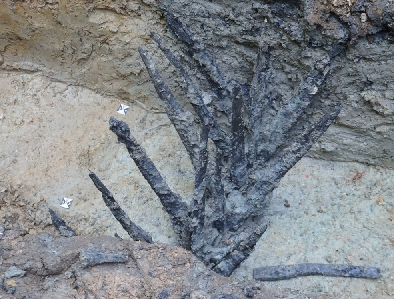Archaeologists Discover Wooden Spikes Described by Julius Caesar
Archaeologists recently reported a stunning discovery; wooden spikes mentioned in Julius Caesar’s “Gallic War” book that were thought to have gone missing for centuries. The discovery was made in a site in northwest France near the coastal city of Brittany. In his book, Julius Caesar wrote about how the Gauls used pointed wooden stakes to prevent the entry of the Roman navy into their harbors. It was a subject of much speculation as no one was able to confirm whether or not Caesar’s account was historically accurate. It was believed that the wooden posts had disappeared with the passage of time. However, recent archaeological excavations near the harbor of Port d’Erquy in the Côtes-d’Armor region of northwest France re-wrote the history. Archaeologists found nearly 200 wooden stakes located on the sea bed.The wooden posts are about two meters high and are said to pre-date the Christian era.The stakes were made of ash, and it is believed that the timber was cut from local forests.

The new discovery confirms that the method mentioned by Julius Caesar was in use by the Gauls during the times. Archaeologists suggest that the wooden posts may have been hidden in the sea bed due to its protective effects from the ocean’s tides and winds. It is also possible that the Gauls placed the posts because of a change in military strategy among other reasons. In addition, experts believe that the discovery also serves as proof of ancient maritime engineering and craftsmanship. It is difficult to achieve such precision in construction without the use of metal tools, so the craftsmanship involved must have been quite impressive indeed. All in all, the incredible discovery of wooden spikes made by the ancient Gauls rewrites the history of Julius Caesar’s Gallic War and serves as evidence of their ancient maritime engineering and craftsmanship. It is a fascinating look into the past and the archaeologists involved are sure to gain much knowledge from this find.